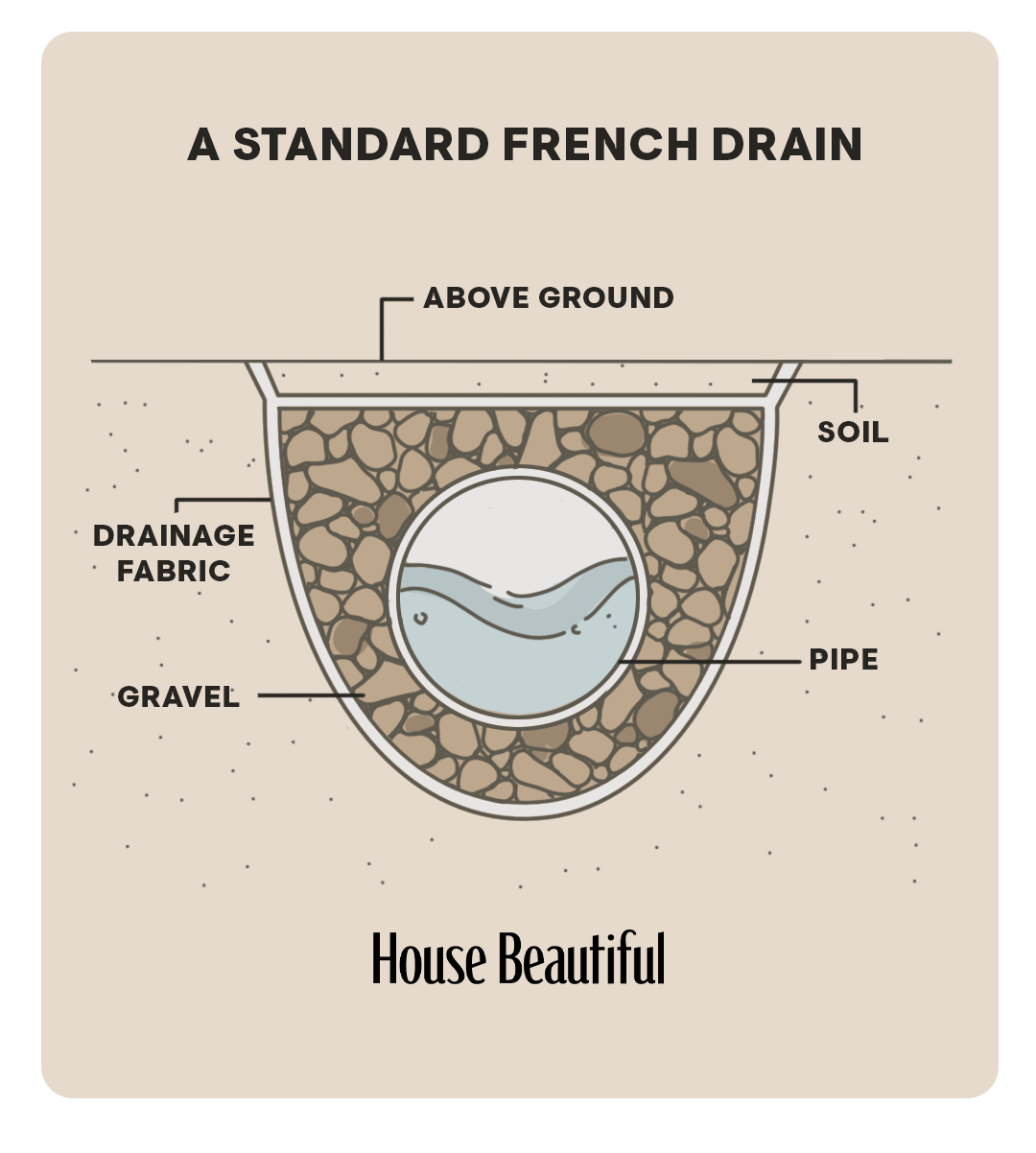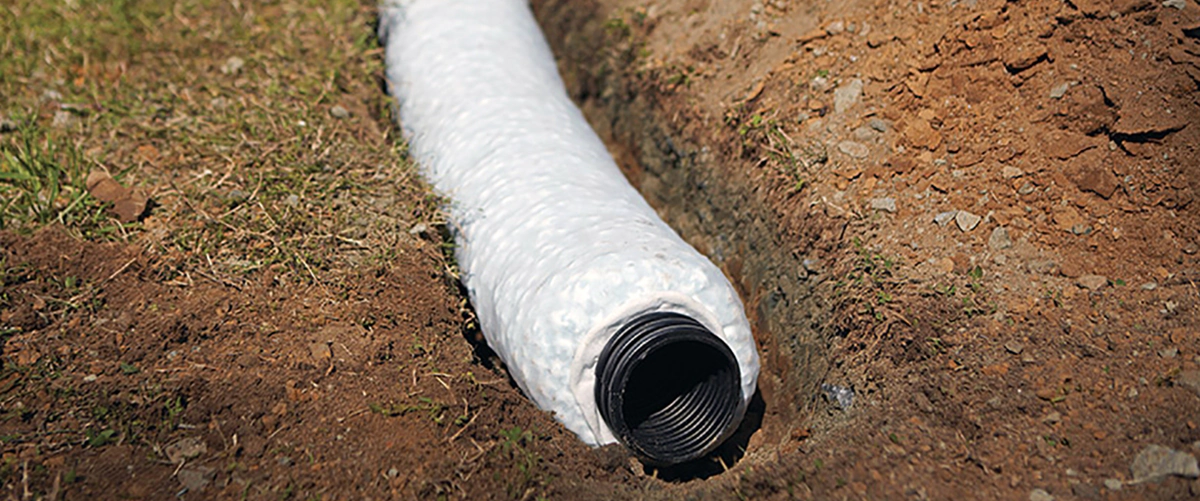The Necessary Overview to Preserving Your French Drain for Long-Lasting Efficiency
Keeping your French drainpipe is vital to its performance and your residential property's defense. Normal checks can conserve you from pricey repairs and water damages. You'll would like to know what indicators to look for and just how often to evaluate your system. And also, comprehending the cleaning process can make a significant distinction. Allow's check out the necessary steps for ensuring your drain functions well for years ahead.
Recognizing the Feature of a French Drain
A French drain is an essential component in managing water around your home. It routes excess water away from your structure, avoiding flooding and damage. When heavy rain falls, the drainpipe gathers water through a perforated pipeline buried in gravel. This system permits water to stream freely, lowering pressure on your cellar wall surfaces and decreasing the danger of leaks.You could question how it operates in technique. As water fills the soil, gravity draws it toward the drainpipe. The perforated pipe records this water, moving it to an assigned drainage area or tornado sewer. This procedure keeps your lawn dry and secures your home's architectural integrity.Understanding exactly how a French drainpipe functions is vital to appreciating its significance. By efficiently carrying water away, it helps keep a dry and safe living atmosphere. Keeping your French drainpipe in leading condition assurances you prevent pricey repairs down the line.
Routine Examinations: What to Search for
Begin by examining for any clogs that may be blocking water circulation when you're evaluating your French drainpipe. Pay attention to indications of surface area disintegration around the drain, as this can indicate possible concerns. Regular evaluations will certainly aid maintain your drainage system working properly.
Clogged Drain Evaluation
How can you tell if your French drainpipe is blocked? Watch for water pooling in your backyard, specifically after hefty rain. That's a red flag if you discover areas where water collects rather of draining pipes. You must likewise inspect the drain outlet; if water isn't moving out as it should, there's most likely an obstruction. Listen for unusual gurgling audios, which can show trapped air. Furthermore, check the drain's surface for any kind of vegetation development, as roots can block the system and infiltrate. If you scent mildewy odors, it can direct to stagnant water created by a blockage. Regularly reviewing these indications can help you keep your French drainpipe efficiently and prevent pricey fixings.
Surface Disintegration Inspect

Cleaning Your French Drain: Step-by-Step Overview
Cleaning your French drain is essential for maintaining it functioning effectively. You'll need some certain devices and a clear process to ensure everything runs efficiently. Allow's go through the steps and ideas for preserving your drain properly.
Tools You'll Require
To take on the job of cleansing your French drain efficiently, you'll want to gather a few necessary devices. Get hold of a strong set of handwear covers to shield your hands from particles and sharp things. A tiny shovel or trowel will certainly aid you get rid of dust or clogs around the drainpipe. For removing the inside, a plumbing technician's serpent or a high-pressure water nozzle can be unbelievably useful. You'll also require a pail for accumulating any kind of particles you pull out. Lastly, having a yard tube on hand will make it easier to wash out the drainpipe and guarantee it's moving efficiently. With these tools ready, you'll be established for a complete cleansing session!
Cleansing Refine Steps
Start by reviewing the location around your French drain for any kind of noticeable debris or blockages. Get rid of leaves, branches, or dust that might obstruct water circulation. Next, examine the inlet and electrical outlet areas; clear any kind of blockages to guarantee correct drain. Use a yard hose pipe to purge the drain, routing water right into the inlet. This helps displace any type of accumulated sludge or debris. Take into consideration utilizing a plumbing professional's snake to damage them up if you discover relentless obstructions. After cleansing, examine the crushed rock around the drain; restore it if it's removed. Ultimately, verify the drainpipe covers are intact and safely in position to protect against debris from going into. Normal cleaning keeps your French drainpipe operating efficiently.
Upkeep Regularity Tips
While regular upkeep is crucial for your French drain's longevity, understanding just how frequently to preserve it can make all the distinction. Preferably, you should examine your French drain at the very least two times a year, ideally in spring and fall. After heavy rains or snowmelt, look for clogs or particles. If you notice any type of standing water, it's time to clean your drain.In locations with hefty vegetation, even more frequent maintenance-- about every three months-- may be needed. In addition, consider cleaning your French drain after major storms or if you observe water pooling in your lawn. By staying positive, you'll ensure your French drainpipe features properly and shields your home from water damages. Routine checks will save you money and time over time.
Determining Common Issues and Their Solutions
When you notice water pooling in your backyard or damp places in your cellar, it's essential to recognize typical problems with your French drain check over here and execute effective solutions. One constant issue is blocking, commonly brought on by debris like leaves or sediment. To repair this, you can utilize a plumbing snake or a high-pressure water jet to clear blockages.Another problem may be improper slope. If your drainpipe isn't sloped properly, water will not move away from your home. You can change the incline by excavating and repositioning the drainpipe pipe.Lastly, check for damages or cracks in the drainpipe itself. If you locate any type of, replacing the harmed areas is essential for peak efficiency. By attending to these issues without delay, you'll assist assure that your French drain remains to function properly, safeguarding your residential property from water damage and keeping a dry, risk-free environment.
Seasonal Upkeep Tips for Your French Drain
Attending to usual problems with your French drainpipe is just the primary step in guaranteeing its lasting efficiency. Seasonal upkeep is essential for peak performance. In the springtime, eliminate leaves and debris that may have gathered during wintertime. Look for any obstructions in the electrical outlet or catch basin, as water requires a clear course to flow freely.During summer, check your drainpipe for any indications of clearing up or changing dirt. Ensure it's still level and functioning correctly. As autumn strategies, clean out any fallen delegates stop obstructions prior to winter arrives.In winter, look for freezing temperatures. If you reside in a chilly environment, make certain your drainpipe isn't in danger of cold. Protecting subjected pipelines can aid. Normal checks and prompt upkeep can prevent costly repair services and maintain your French drainpipe functioning properly year-round. Stay proactive and delight in satisfaction recognizing your drain system is in good shape!
When to Contact an Expert
When to call in a specialist can conserve you time and stop further damage to your French drainpipe, understanding. It's a clear sign that your drainpipe might be clogged or harmed if you observe relentless standing water in your lawn. Don't ignore weird smells, as they can suggest sewage back-up or decay, which requires prompt attention.If you locate that your drain isn't functioning effectively after efforts to clean or keep it, it's time to connect for specialist assistance. Additionally, if you're unclear regarding the underlying issues or do not have the necessary devices, hiring a specialist can supply peace of mind.Finally, if your French drain is old or has actually experienced considerable damage, expert analysis can figure out whether repairs or full replacement is required. Trust the specialists to ensure your water drainage system works effectively for years ahead.
Tips for Stopping Future Drainage Issues
To maintain your French drain working successfully, consistently examining and preserving it can make all the difference. Begin by clearing debris, leaves, and dust from the surface and drainpipe openings. This prevents clogs that can result in water back-up. Check the crushed rock around the drain; if it's compacted or deteriorated, consider adding fresh gravel to preserve excellent flow.Next, divert water away from your drain by making sure seamless gutters and downspouts are clear and routing water a minimum of 3 feet away from your structure. Regularly check for any type of indications of damages or drooping. If you notice issues, address them immediately.Finally, think about setting up a catch or a filter container to catch bigger debris before it goes into the drain. helpful hints By staying positive with these suggestions, you'll reduce the danger of future drain issues and keep your French drain in top shape.
Frequently Asked Questions
How much time Does a French Drainpipe Typically Last?
A French drainpipe commonly lasts around 30 to 40 years, relying on the products made use of and maintenance (Portland French Drain). If you keep up with regular checks, you can extend its lifespan also additionally
Can I Set Up a French Drain Myself?
Yes, you can install a French drainpipe on your own if you've got the right devices and expertise. Simply make sure to plan thoroughly, follow neighborhood guidelines, and assurance proper water drainage to stay clear of future problems.
What Materials Are Made Use Of in a French Drainpipe?
You'll need perforated pipeline, crushed rock, landscape fabric, and a strong drain pipe for your French drainpipe. These materials help reroute water effectively, preventing you could try these out flooding and maintaining your home dry and secure from water damages.

Is an Authorization Required to Install a French Drain?
You'll likely require an authorization to mount a French drainpipe, relying on regional guidelines. Get in touch with your community to ensure you follow any type of required guidelines and avoid potential concerns throughout setup.
What Are the Costs Related To French Drain Upkeep?
Keeping a French drainpipe commonly sets you back in between $100 and $500 every year. You'll need to take into account expenses for cleansing, fixings, and assessments. Routine upkeep assists avoid bigger expenditures and assurances your system works properly for several years - Portland French Drain. When you're checking your French drain, beginning by inspecting for any kind of blockages that might be blocking water flow. By remaining proactive, you'll assure your French drain features efficiently and shields your building from water damage. When you see water pooling in your backyard or damp areas in your cellar, it's important to recognize common concerns with your French drain and carry out effective options. You can adjust the slope by excavating and repositioning the drainpipe pipe.Lastly, check for damages or fractures in the drainpipe itself. Check the gravel around the drainpipe; if it's compacted or worn down, think about including fresh gravel to keep optimal flow.Next, draw away water away from your drain by making sure seamless gutters and downspouts are clear and guiding water at the very least three feet away from your foundation